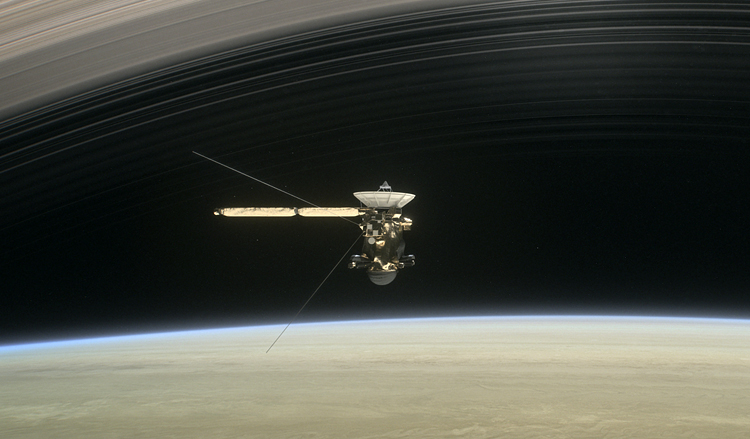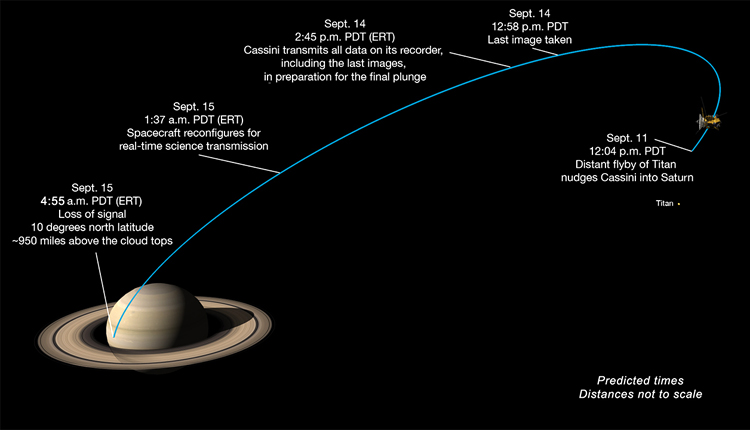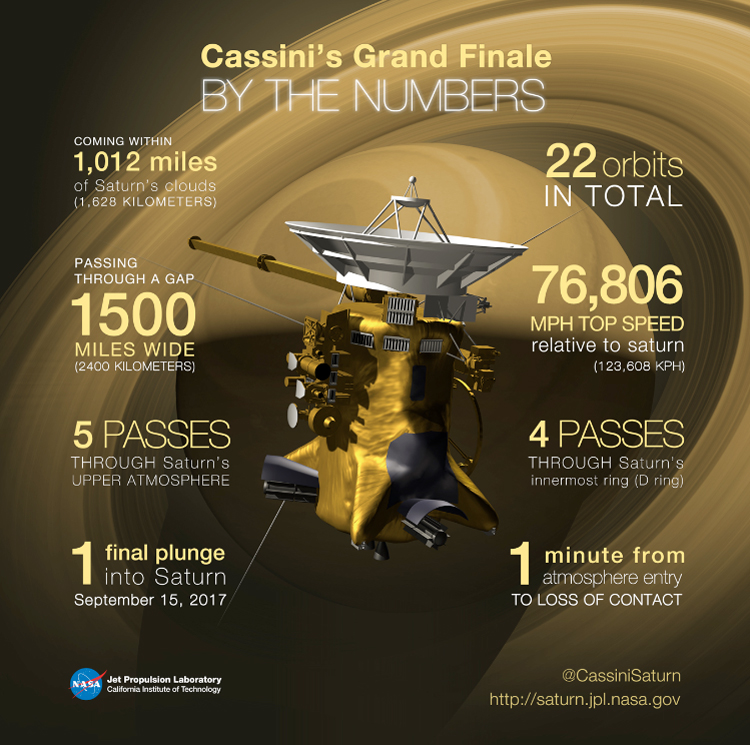INDIAN ARMED FORCES CHIEFS ON
OUR RELENTLESS AND FOCUSED PUBLISHING EFFORTS

SP Guide Publications puts forth a well compiled articulation of issues, pursuits and accomplishments of the Indian Army, over the years

I am confident that SP Guide Publications would continue to inform, inspire and influence.

My compliments to SP Guide Publications for informative and credible reportage on contemporary aerospace issues over the past six decades.
Cassini: Mission Accomplished
Cassini-Huygens has been described by NASA's Planetary Science Division Director as a "mission of firsts" that has revolutionized human understanding of the Saturn system, including its moons and rings, and our understanding of where life might be found in the Solar System.

After two decades in space, NASA's Cassini spacecraft completed its remarkable journey of exploration on September 15, 2017. The Cassini-Huygens mission was a collaboration between NASA, the European Space Agency and the Italian Space Agency to send a probe to study the planet Saturn and its system, including its rings and natural satellites.
The Flagship-class unmanned robotic spacecraft comprised both NASA's Cassini probe, and ESA's Huygens lander which landed on Saturn's largest moon, Titan. Cassini was the fourth space probe to visit Saturn and the first to enter its orbit. The craft were named after astronomers Giovanni Cassini and Christiaan Huygens.
Launched aboard a Titan IVB/Centaur on October 15, 1997, Cassini was active in space for almost two years, with 13 years spent orbiting Saturn, studying the planet and its system after entering orbit on July 1, 2004. The voyage to Saturn included flybys of Venus, Earth, the asteroid 2685 Maursky, and Jupiter. Its mission ended on September 15, 2017 when Cassini was commanded to fly into Saturn's upper atmosphere and burn up in order to prevent any risk of contaminating Saturn's moons, some with environments potentially bearing life, with stowaway terrestrial microbes.
'Mission of firsts'
The mission is widely perceived to have been successful beyond expectation. Cassini-Huygens has been described by NASA's Planetary Science Division Director as a "mission of firsts" that has revolutionized human understanding of the Saturn system, including its moons and rings, and our understanding of where life might be found in the Solar System.
Cassini's original mission was planned to last for four years, from June 2004 to May 2008. The mission was extended for another two years until September 2010, branded the Cassini Equinox Mission. The mission was extended a second and final time with the Cassini Solstice Mission, lasting another seven years until September 15, 2017, on which date Cassini was de-orbited by being allowed to burn up in Saturn's upper atmosphere.

Real reason Cassini had to die
Analyst Fedor Kossakovski states that the real reason Cassini had to die was because of an international treaty with a rule to not contaminate potentially-habitable worlds. To comply with this rule, NASA maintains an Office of Planetary Protection in order "to preserve our ability to study other worlds as they exist in their natural states; to avoid contamination that would obscure our ability to find life elsewhere — if it exists; and to ensure that we take prudent precautions to protect Earth's biosphere in case it does."
"Cassini's own discoveries were its demise," said Cassini Program Manager Earl Maize at the April 2017 conference. "Enceladus has got a warm, saltwater, undersea ocean, and it's got plumes coming out. We cannot risk an inadvertent contact with that pristine body." Parking Cassini in orbit creates a risk of someday colliding with Enceladus. Such an accident could contaminate Enceladus in serious ways, perhaps the most unpleasant of which would be radioactive pollution.
Having expended almost every bit of the rocket propellant it carried to Saturn, operators deliberately plunged Cassini into the planet to ensure Saturn's moons remained pristine for future exploration — in particular, the ice-covered, ocean-bearing moon Enceladus, but also Titan, with its intriguing pre-biotic chemistry.
Many moon flybys
Beginning in 2010, Cassini began a seven-year mission extension in which it completed many moon flybys while observing seasonal changes on Saturn and Titan. The plan for this phase of the mission was to expend all of the spacecraft's propellant while exploring Saturn, ending with a plunge into the planet's atmosphere.
In April 2017, Cassini was placed on an impact course that unfolded over five months of daring dives — a series of 22 orbits that each pass between the planet and its rings. Called the Grand Finale, this final phase of the mission has brought unparalleled observations of the planet and its rings from closer than ever before.
On Sept. 15, 2017, the spacecraft made its final approach to the giant planet Saturn. This time, Cassini dived into the planet's atmosphere, sending science data for as long as its small thrusters can keep the spacecraft's antenna pointed at Earth. Soon after, Cassini burned up and disintegrated like a meteor.
To its very end, Cassini was a mission of thrilling exploration. And although the spacecraft has gone after the finale, its enormous collection of data about Saturn – the giant planet itself, its magnetosphere, rings and moons — will continue to yield new discoveries for decades.
Cassini Timeline
October 15, 1997 - Launch from Cape Canaveral: A nearly seven-year journey to the ringed planet Saturn began with the liftoff of a Titan IVB/Centaur carrying the Cassini orbiter and the European Space Agency's Huygen's probe. Both the orbiter and the probe were history-making triumphs of engineering and scientific discovery.
April 5, 1998 - First Venus flyby: Cassini-Huygens performed a flyby of the planet Venus, getting within about 176 miles of the Venusian surface.
August 17, 1999 - Earth-Moon flyby: Nearly two years after launch, Cassini-Huygens flew within about 700 miles of Earth, passing most clearly above the eastern South Pacific. The flyby gave Cassini a 3.4 mile per second speed boost.
October 31, 2002 - Camera test: Cassini captured the image of Saturn during a camera test 20 months before arriving at Saturn.
June 30, 2004 - Saturn orbit insertion: Cassini, still carrying the Huygens probe, became the first spacecraft to orbit Saturn on July 1, 2004 at 9.12 p.m UTC (June 30 at Cassini's home base in California)
December 3, 2004 - Huygens Probe detaches: The Huygens probe successfully detached from Cassini to begin a three-week journey to Saturn's moon Titan.
July 21, 2006 - Finding lakes on Titan: During a flyby, Cassini's radar spotted several dozen lakes as small as 1 km wide, with some nearly 30 km wide.
May 31, 2008 - Primary mission completed: In four years at Saturn, Cassini revealed wonder after wonder. The growing body of knowledge about Saturn, its rings, moons and magnetic environment is allowing scientists to link together clues to solve long-standing scientific mysteries and formulate many new questions.
February 5, 2010 - Mission extended: NASA extended the international Cassini-Huygens mission to explore Saturn and its moon through 2017. This enabled Cassini to observe seasonal changes in Saturn system over almost half Saturn's nearly 30-year orbit around the sun.
April 12, 2017 - Energy for life? : Scientists announce data from the spacecraft indicates hydrogen gas, which could potentially provide a chemical energy source for life, is pouring into the subsurface ocean of Enceladus from hydrothermal activity on the seafloor.
April 23, 2017 - Final Titan flyby: Cassini had its last close brush with Saturn's hazy moon Titan on April 21 at 11.08 apm passing at an altitude of about 608 miles above the moon's surface.
April 26, 2017 - The Grand Finale begins: Cassini ends its historic mission with 22 daring loops passing through the gap between Saturn and the innermost ring. During this 'Grand Finale' Cassini explores an entirely new region around Saturn, coming closer than ever before.
September 15, 2017 - The Grand Finale: Just a month shy from 20 years in space, Cassini made its plunge into Saturn's atmosphere. The spacecraft was crushed and vaporized by the pressure and temperature of Saturn's final embrace to protect worlds like Enceladus and Titan, moons with liquid water oceans under their icy crusts that might harbour conditions for life.






